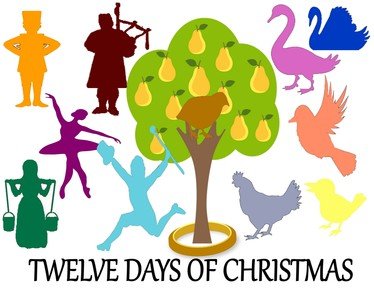
Twelve Days of Christmas Trivia Quiz
The "Twelve Days of Christmas" is a very old Christmas song with the 'true love' receiving many presents over the period. I've given you all the presents all you have to do is put them in the correct order.
An ordering quiz
by Midget40.
Estimated time: 3 mins.